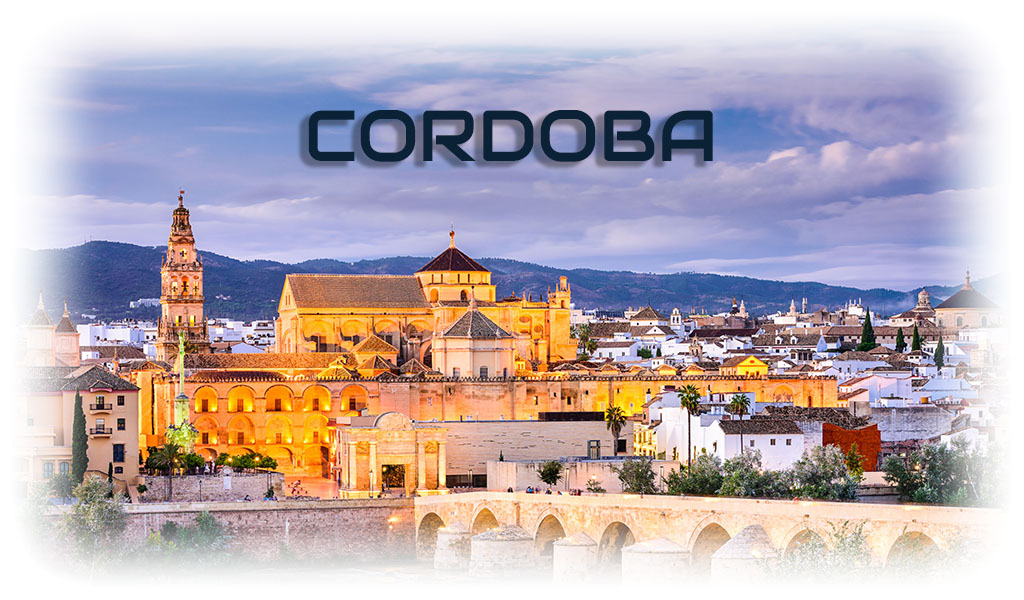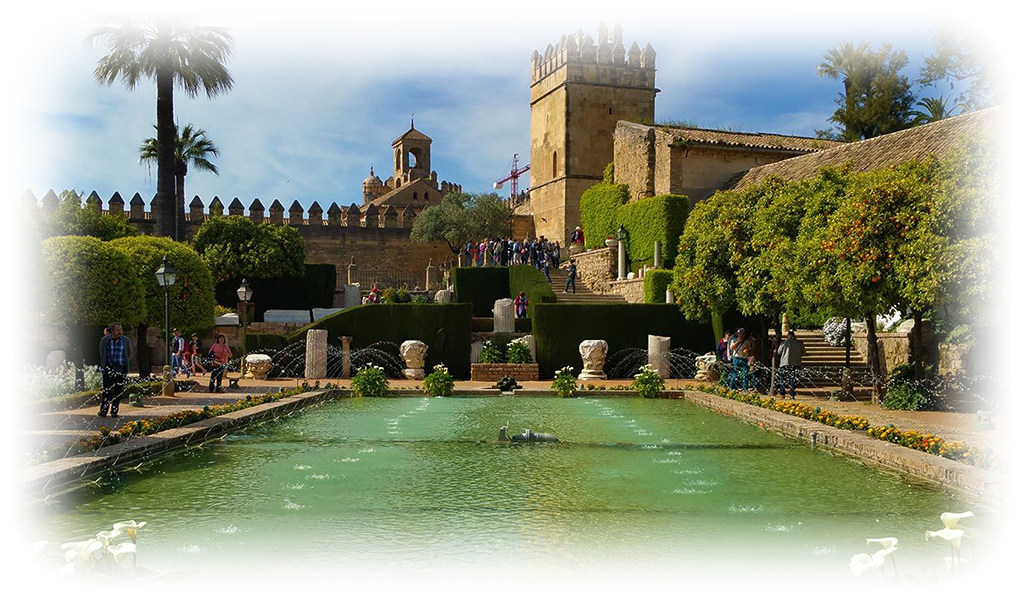
Córdoba is a city in southern Spain and the capital of the province of the same name. Located in the autonomous region of Andalusia on the slopes of the Sierra Morena on the right bank of the river Guadalquivir. Cordoba is an ancient city with a unique Moorish atmosphere, sometimes called "Western Mecca". It is a magical labyrinth of narrow winding streets, whitewashed houses decorated with flowers, and one of the most beautiful Muslim buildings in Europe. Cordoba was founded by the Romans. And in the Middle Ages it was one of the largest capitals in Europe, surpassing even Rome and Paris.
Geography and climate
Cordoba is located in the center of Andalusia in southern Spain. To the north of the city are the hills (some call them the mountains) of the Sierra Morena. Their average height is about 400 meters. The city is located in the basin of the river Guadalquivir.
The climate is Mediterranean. Winters are usually mild. Although sometimes there are frosts due to the distance from the coast. Summer is very hot, with significant daily heat fluctuations and maximum temperatures which are among the highest in Europe.
The best time to visit
The best time to visit Cordoba is April-June and September-October. In summer it is very hot and not uncommon temperatures above 40 degrees.
History
The settlement on the site of Cordoba has been known since Phoenician times. In the 3rd century BC it was captured by the Romans. Under Emperor Augustus, Cordoba became the center of the Roman province of Betica. After the fall of the Roman Empire, the city was conquered by the Vandals, then the Visigoths and Byzantium.
In 711 the Iberian Peninsula was conquered by the Arabs and Berbers. In 756 Córdoba became the capital of the Umayyad Caliphate. During their rule, the city reached the peak of its power and development. By the 10th century, Cordoba had become one of the largest cities in Europe, a center of Arab science and culture. During this period the city's population approached one million.
In 1031 the Caliphate of Cordoba disintegrated. In 1070 Córdoba was captured by the Emir of Seville. After that, the city lost its former significance. In 1263 Córdoba became part of the Kingdom of Castile. Today it is one of the best preserved ancient cities in Spain, with a large historical center and monuments that are a UNESCO World Heritage Site.
How to get there
Cordoba Airport has almost no regular commercial flights. The nearest major airports are in Seville, Malaga and Madrid . From the airports of these cities by train or bus you need to get to the main stations, and from there you can easily get to Cordoba.
The train station is located in the northern part of the historic center. Across the road is the bus station. High-speed trains run to Madrid, Seville, Malaga and even Barcelona. Regular bus services are available from almost every city in Andalusia, as well as the capital of Spain.
Geography and climate
Cordoba is located in the center of Andalusia in southern Spain. To the north of the city are the hills (some call them the mountains) of the Sierra Morena. Their average height is about 400 meters. The city is located in the basin of the river Guadalquivir.
The climate is Mediterranean. Winters are usually mild. Although sometimes there are frosts due to the distance from the coast. Summer is very hot, with significant daily heat fluctuations and maximum temperatures which are among the highest in Europe.
The best time to visit
The best time to visit Cordoba is April-June and September-October. In summer it is very hot and not uncommon temperatures above 40 degrees.
History
The settlement on the site of Cordoba has been known since Phoenician times. In the 3rd century BC it was captured by the Romans. Under Emperor Augustus, Cordoba became the center of the Roman province of Betica. After the fall of the Roman Empire, the city was conquered by the Vandals, then the Visigoths and Byzantium.
In 711 the Iberian Peninsula was conquered by the Arabs and Berbers. In 756 Córdoba became the capital of the Umayyad Caliphate. During their rule, the city reached the peak of its power and development. By the 10th century, Cordoba had become one of the largest cities in Europe, a center of Arab science and culture. During this period the city's population approached one million.
In 1031 the Caliphate of Cordoba disintegrated. In 1070 Córdoba was captured by the Emir of Seville. After that, the city lost its former significance. In 1263 Córdoba became part of the Kingdom of Castile. Today it is one of the best preserved ancient cities in Spain, with a large historical center and monuments that are a UNESCO World Heritage Site.
How to get there
Cordoba Airport has almost no regular commercial flights. The nearest major airports are in Seville, Malaga and Madrid . From the airports of these cities by train or bus you need to get to the main stations, and from there you can easily get to Cordoba.
The train station is located in the northern part of the historic center. Across the road is the bus station. High-speed trains run to Madrid, Seville, Malaga and even Barcelona. Regular bus services are available from almost every city in Andalusia, as well as the capital of Spain.

Food and drinks
Cordoba is one of the gastronomic capitals of Andalusia, a wonderful blend of traditional Spanish and Oriental cuisine. Typical dishes: salmorejo and gazpacho, beans and asparagus with scrambled eggs, lamb casserole, fried pig, stewed bull's tail, flamenco (slices of ham stuffed with cheese), artichokes with pork loin. Olive oil and excellent local wine is the perfect addition to this kitchen.
Attractions
The Mesquite or Grand Mosque is a masterpiece of Islamic architecture considered one of the most striking monuments of Moorish heritage in Spain. Construction of the mosque began in the 8th century. Throughout its history, it has expanded several times. The mosque was rebuilt into a Christian cathedral in 1523. Despite this, the building has retained many original elements and structure. The contrast between Christian and Islamic architecture is a reminder of Cordoba's multicultural past.
The building is famous for its "forest" of columns (more than 800) topped with red and white stripes and arches of Arabic style. The gates of Puerta del Perdon lead to the picturesque Patio de los Naranjos which grows orange trees and palm trees. A massive bell tower on the north side of the building in the 16th century replaced the minaret.
The Roman bridge or Puerto Romano is one of the symbols of the city. This ancient bridge consists of 16 arches. It was built after the victory of Caesar over Pompey the Great. The medieval bridge was built during the Umayyad rule on a Roman foundation.
The confusion of the narrow medieval streets surrounding Mesquite hides other interesting sights of Cordoba.
Juderia is an old Jewish quarter. It is one of the most atmospheric places of the old town with narrow streets, old houses, cozy flowering courtyards and quiet small squares. This area has a special charm. There are two important Jewish monuments: the 15th-century Mudejar-style synagogue and the Casa de Sepharad Museum.
Palazzo de Viana is an aristocratic palace famous for its patios. It was designed in the Andalusian style with decorative fountains and lush landscaping.
Alcazar de los Reyes is Castle of Christian monarchs located near the Roman bridge. This is one of the oldest places in the city, where you can find even traces of the ancient Roman past. This former palace was home to the Moorish rulers of Córdoba until the city was conquered by the Castilian kings. In front of the main building is the square where Christian martyrs were executed during the caliphate. Some of the ancient defensive walls and towers of the castle date back to the Moorish era, but most, including the Tower of the Inquisition, were built later when the monarchs of Castile improved the citadel. The Alcazar is a typical example of Andalusian architecture, consisting of various halls and picturesque courtyards. The fortress museum contains a collection of antiquities, including beautiful Roman mosaics.
San Lorenzo is one of the most beautiful medieval churches in Cordoba. Like many ancient religious buildings in Andalusia, it was rebuilt from an ancient mosque. In front of the main entrance is a portico with three arches. Other notable features are the tower built on the minaret of the former mosque. It is made in the style of the famous Seville Giralda. Inside is a beautiful baroque altar and many paintings by Italian artists.
The Church of San Miguel was built after the Reconquista on the site of a Muslim mosque. The building contains Romanesque elements and features of the Mudejar style.
Cordoba is one of the gastronomic capitals of Andalusia, a wonderful blend of traditional Spanish and Oriental cuisine. Typical dishes: salmorejo and gazpacho, beans and asparagus with scrambled eggs, lamb casserole, fried pig, stewed bull's tail, flamenco (slices of ham stuffed with cheese), artichokes with pork loin. Olive oil and excellent local wine is the perfect addition to this kitchen.
Attractions
The Mesquite or Grand Mosque is a masterpiece of Islamic architecture considered one of the most striking monuments of Moorish heritage in Spain. Construction of the mosque began in the 8th century. Throughout its history, it has expanded several times. The mosque was rebuilt into a Christian cathedral in 1523. Despite this, the building has retained many original elements and structure. The contrast between Christian and Islamic architecture is a reminder of Cordoba's multicultural past.
The building is famous for its "forest" of columns (more than 800) topped with red and white stripes and arches of Arabic style. The gates of Puerta del Perdon lead to the picturesque Patio de los Naranjos which grows orange trees and palm trees. A massive bell tower on the north side of the building in the 16th century replaced the minaret.
The Roman bridge or Puerto Romano is one of the symbols of the city. This ancient bridge consists of 16 arches. It was built after the victory of Caesar over Pompey the Great. The medieval bridge was built during the Umayyad rule on a Roman foundation.
The confusion of the narrow medieval streets surrounding Mesquite hides other interesting sights of Cordoba.
Juderia is an old Jewish quarter. It is one of the most atmospheric places of the old town with narrow streets, old houses, cozy flowering courtyards and quiet small squares. This area has a special charm. There are two important Jewish monuments: the 15th-century Mudejar-style synagogue and the Casa de Sepharad Museum.
Palazzo de Viana is an aristocratic palace famous for its patios. It was designed in the Andalusian style with decorative fountains and lush landscaping.
Alcazar de los Reyes is Castle of Christian monarchs located near the Roman bridge. This is one of the oldest places in the city, where you can find even traces of the ancient Roman past. This former palace was home to the Moorish rulers of Córdoba until the city was conquered by the Castilian kings. In front of the main building is the square where Christian martyrs were executed during the caliphate. Some of the ancient defensive walls and towers of the castle date back to the Moorish era, but most, including the Tower of the Inquisition, were built later when the monarchs of Castile improved the citadel. The Alcazar is a typical example of Andalusian architecture, consisting of various halls and picturesque courtyards. The fortress museum contains a collection of antiquities, including beautiful Roman mosaics.
San Lorenzo is one of the most beautiful medieval churches in Cordoba. Like many ancient religious buildings in Andalusia, it was rebuilt from an ancient mosque. In front of the main entrance is a portico with three arches. Other notable features are the tower built on the minaret of the former mosque. It is made in the style of the famous Seville Giralda. Inside is a beautiful baroque altar and many paintings by Italian artists.
The Church of San Miguel was built after the Reconquista on the site of a Muslim mosque. The building contains Romanesque elements and features of the Mudejar style.








